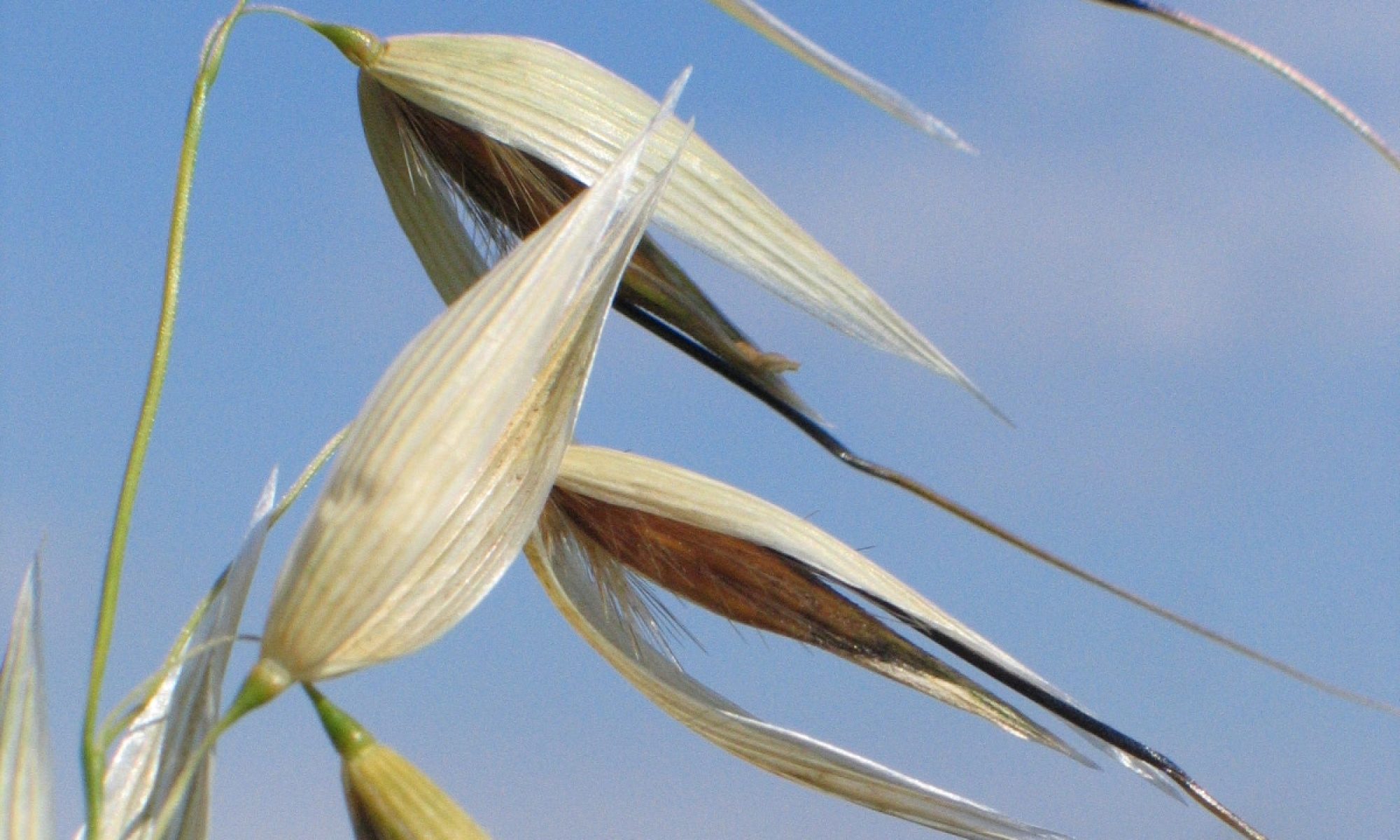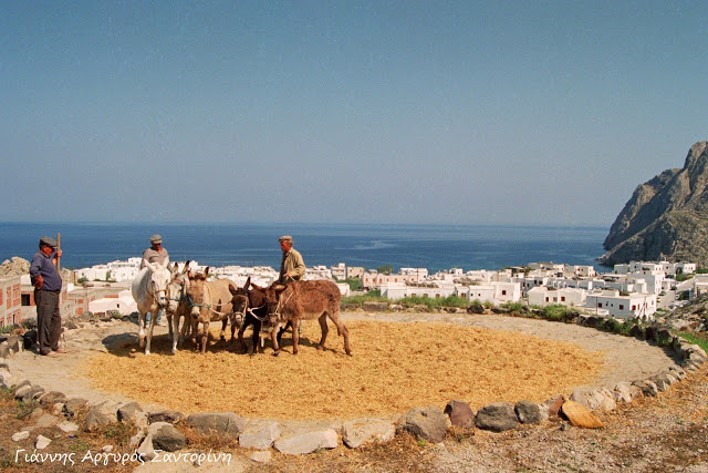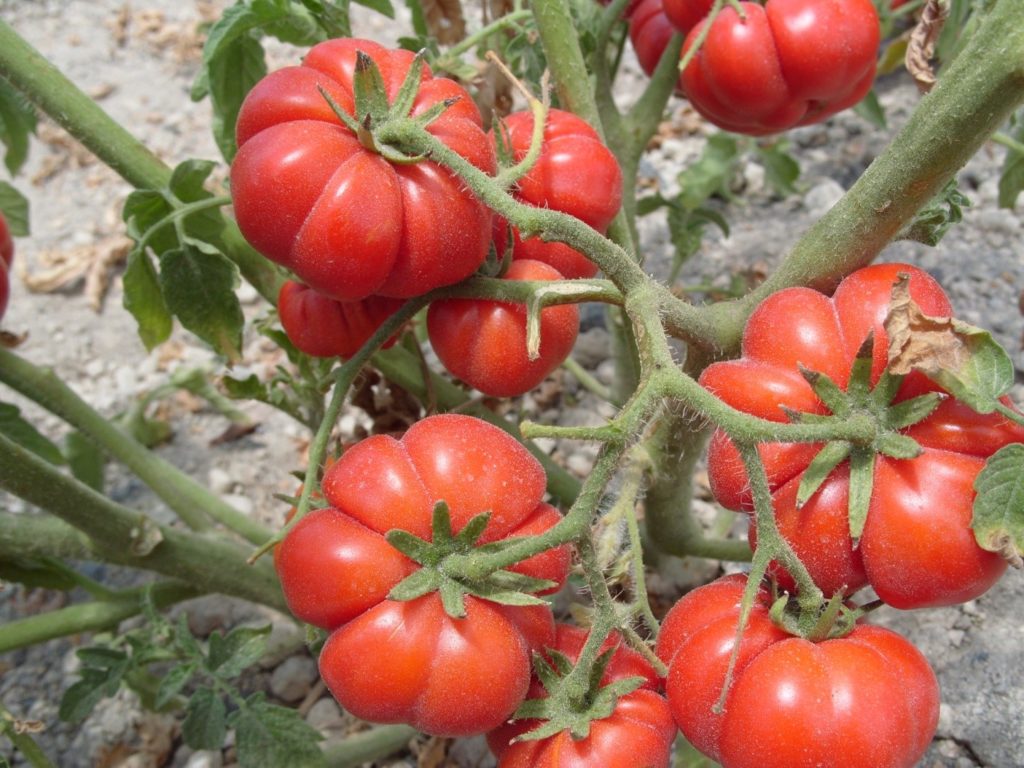This page highlights some events and news items relating to the work of Farmer’s Pride project partners to conserve on-farm plant genetic resources – landraces/farmers’ varieties. Project reports and databases relating to landraces can be found here.
Finnish landrace rye field day
In mid-August 2019 a Farmers’ Pride field day was organized by Natural Resources Institute Finland (Luke). It was held on a family farm in South East Finland (Kymeenlaakso region), in Virolahti which is the most southeastern municipality in Finland (60° 31′ N, 27° 30′ E). The aim of the field day was to get to know one landrace rye through many of our senses: to taste the bread and to touch to its phenotype by harvesting it in the traditional way with a sickle in hand. The plan was to introduce landrace ryes to farmers, processors, journalists and consumers.
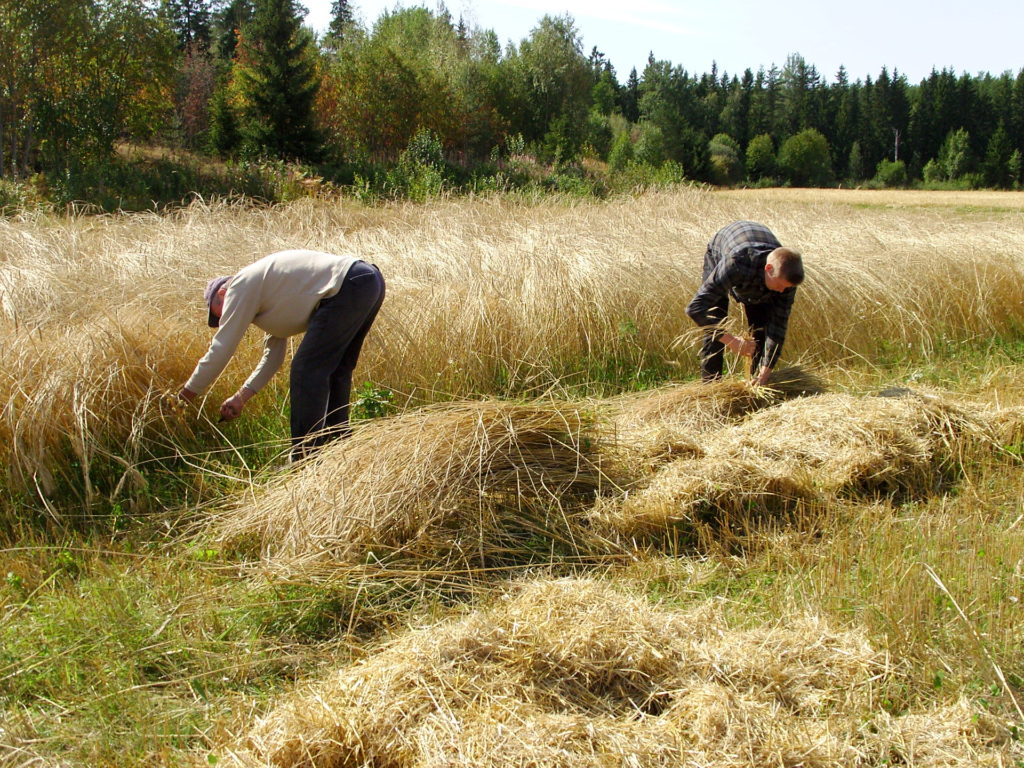
‘Hermanni’ has been cultivated at least from 1950s on the family farm and the yield has been used in home consumption until 2016, when it was registered as a conservation variety. In 2018 its cultivation area was 35 acres and the yield obtained was about one thousand kilos. In earlier times it was cultivated every second or third year because the entire yield was used on the farm. For the last three years it has been sown every autumn, in order to get a higher yield for small niche markets. After saving the seeds for the next sowing, the grains are milled in a small mill..
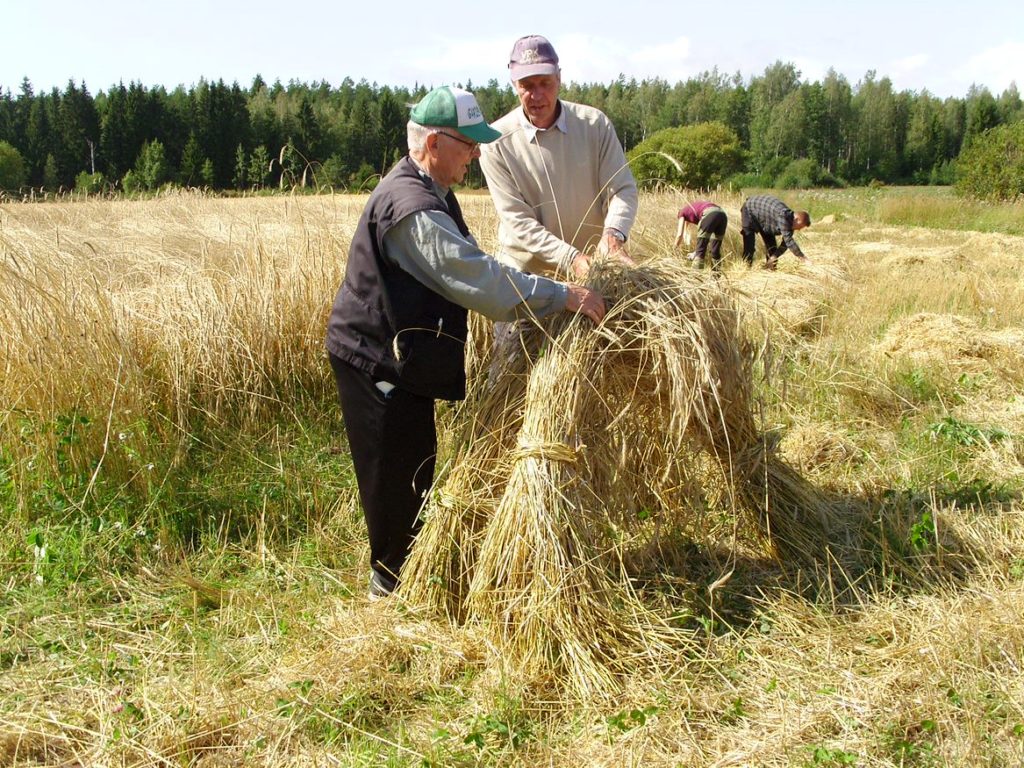
The cutting with a sickle is done in the front bend position. A large handful of straws is adjusted in the free hand, which are cut with the smallest possible traction around the wrist. If you cut off straws by tearing, the moldy roots will easily come along. Each handful of cut straws is adjusted in a sheaf whilst supporting spikes from underneath with the sickle. Five large handfuls of straws cut with sickles are placed in one sheaf. The sheaf is tied to the bundle with a couple of straws. The bandage is placed around the basal of the sheaf so that the sheaf rotates at the same time. With both hands, the bandage is pulled tight and twisted and pressed with the thumb under the bandage. Sheaves are assembled vertically with basal downwards leaning against each other. There are several local rye stook sizes and styles – in Virolahti we made an eighteen-piece one. A hat sheaf is placed on top of the rye stook to protect it from the rain. The hat sheaf is folded by arm from above the binding site downwards and the straws are spread into a fan. The basal of the hat sheaf is put on point south to help it dry better and – according to tradition – to wish good weather for drying before moving sheaves to a drying barn for threshing.
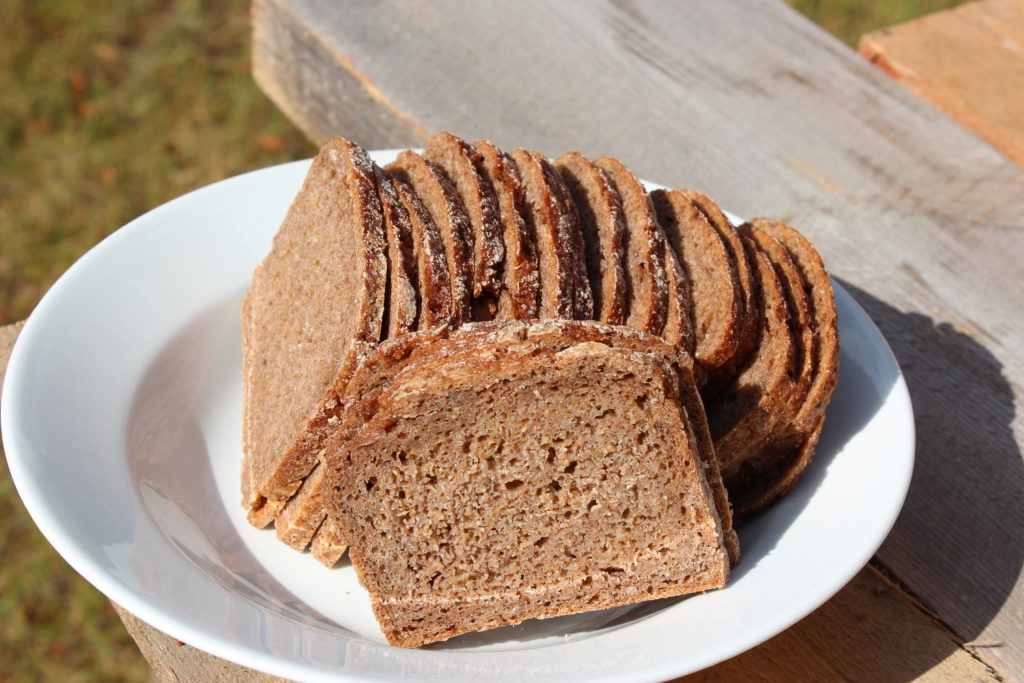
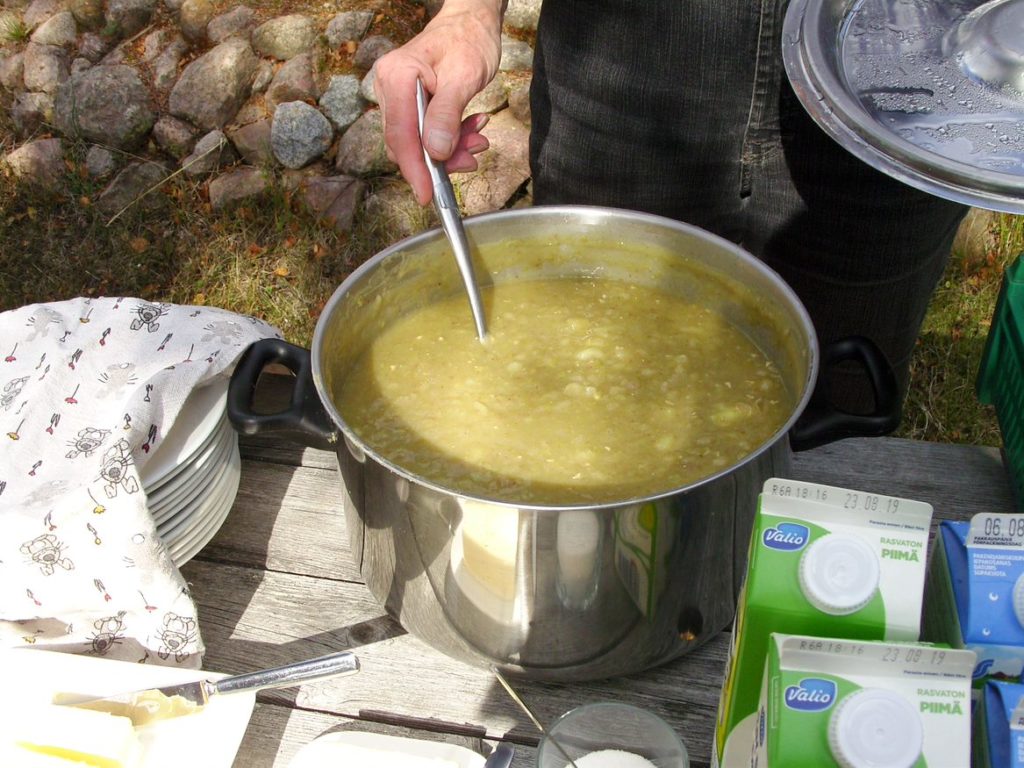
The “hapanvelli” (sour soup) is a traditional dish in Virolahti municipal in southwest Finland. Its preparation begins with boiling soaked dried peas in water and later raw potato slices are added to soup. The soup is precipitated with rye sourdough and spiced with salt. The soup is allowed to simmer for half an hour until a thick leathery layer forms on the surface. The soup is enjoyed with a small piece of butter added to the plate.
Since 2018, an artisan bakery has baked ‘Hermanni’ speciality sourdough rye bread to sell from their bakery cafe.
For those who read Finnish, the field day event was documented in the magazine of Maatiainen association (Landrace association in Finland); the media release), an article on the suitability of the landrace rye ‘Hermanni’ for organic farming is described in the magazine of the Finnish Organic Association.
Open Days at the UNIPG experimental field in Perugia, Italy
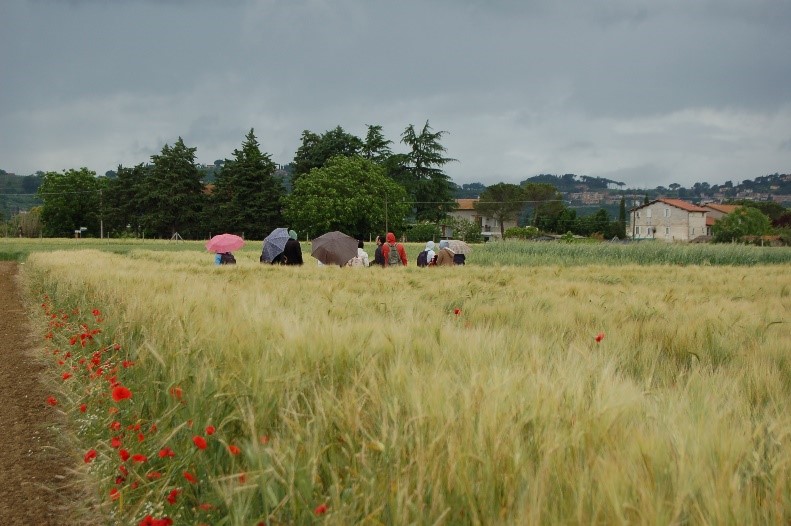
In May 2018, project partner Dipartimento di Scienze Agrarie Alimentari e Ambientali (DSA3) of Università degli Studi di Perugia (UNIPG) organized an open day on ‘Diversity use in plant breeding and sustainable agriculture’ at their experimental field located in Sant’Andrea d’Agliano (Perugia, Italy). Farmers, farmer organizations, breeders, students and other stakeholders were invited to learn about the outputs from DSA3 breeding programmes and, in particular, about the development of a barley populations meant to be used in sustainable agriculture and beer production; a bread wheat mixture and einkorn wheat landrace diversity assessment; their work with legumes landrace; the DSA3 genebank and hop (Humulus lupulus) ecotype living collection.
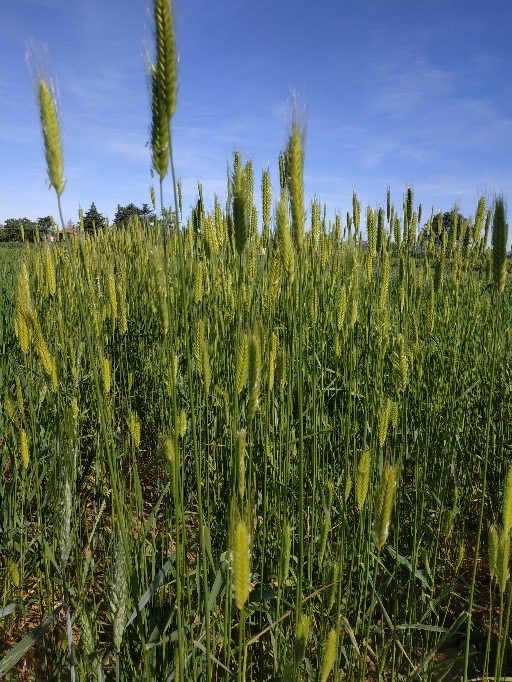
The May 2020 visit to the experimental fields was a virtual one due to the COVID-19 pandemic, taking advantage of a video conferencing service that enables global and virtual teams to collaborate in real time. Breeders, seed companies, meal and biscuit manufacturers learnt about the various research carried out by the Department, including the agronomic characterisation of an einkorn wheat landrace collection.
Conserving landrace grapes, small size tomatoes (‘Tomataki’) and fava beans (‘Arakas for fava’) on the Greek island of Thera (Santorini)
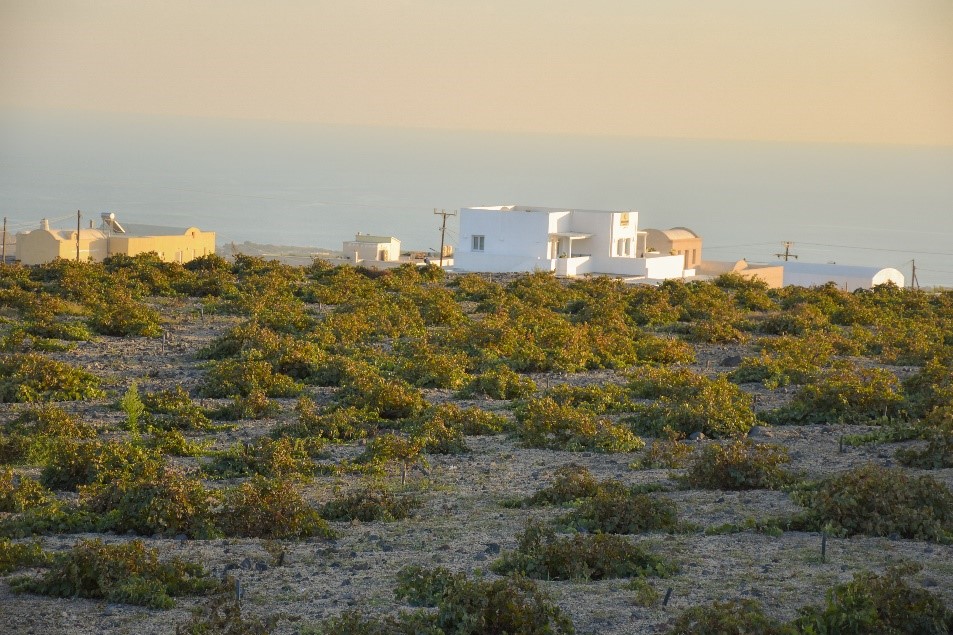
Participants at the October 2019 Farmer’s Pride workshop in Santorini, visited the Union of Santorini Cooperatives, SantoWines, to learn about their work to conserve the island’s traditional landrace crops of grapes, fava beans (‘Arakas for fava’) and small size tomatoes (‘Tomataki’). Plants on the volcanic island of Santorini are not irrigated artificially and rainfall is rare. Water comes from the natural humidity and the sea mist which is absorbed by the volcanic soil. This method, known as dry farming, results in a low-yield production that creates unique and flavourful fava, tomatoes, grapes and wines. From sowing to harvesting, all of the work in the fields is done by hand. In areas of severe slope, the farmers have created terraces, built with lava stones, known as “pezoules” in order to provide easier access to the vineyards, to facilitate the cultivation and to maximise their capacity to absorb rain water.
Wine production dates back thousands of years, approximately around the 3rd millennium BC. Today, the Assyrtiko landrace white wine grape is still grown without the use of a vine training system in approximately 1200 hectares of family-owned vineyards. The vintners have invented a distinct way of training the vines, called “kouloura”. The vines are kept close to the ground and are given a spiral, basket shape that anchors the grapes and protects them from the strong winds. SantoWines works to safeguard the traditional local cultivation, producing highest quality Protected Designation of Origin (PDO) Santorini wines and products as well as promoting sustainable agriculture development. Some years ago, Farmer’s Pride partner the Hellenic Agricultural Organization-DEMETER, together with the Aristotle University of Thessaloniki and the Union of Santorini Cooperatives, started a project to improve the important landraces ‘Tomataki Santorinis’ and ‘Arakas for Fava Santorinis’, though a study of its variability, pedigree, and analytical selection. Accessions of ‘Tomataki’ and ‘Arakas for Fava Santorinis’ are kept, under long term storage conditions in the gene bank of DEMETER and at Santowines.
Right: ‘Tomataki Santorinis’ cultivation on the pumice soil of Santorini (Greece). photo Ekaterini Traka-Mavrona
